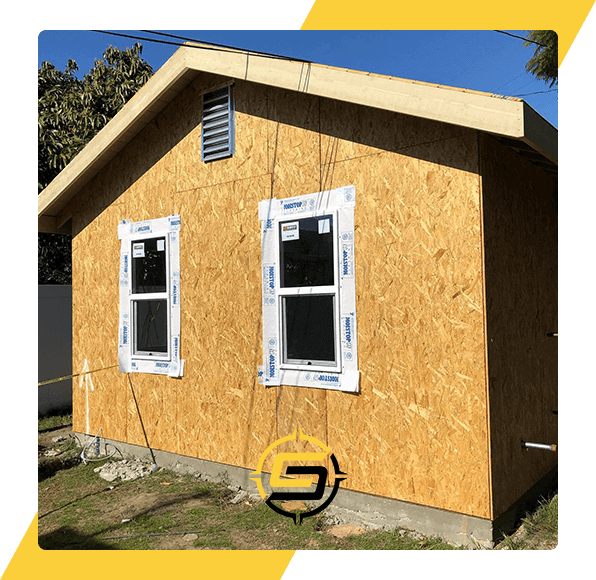How much does a retroactive permit cost?
Home improvement projects are an excellent way to maximize the functionality and living space and value of the property. Miami building department requires permits for addition and remodeling projects to ensure safety of occupants and compliance with local building codes.
Yet, many times property owners in the city bypass the permitting process to save time and money. Work done without necessary permits can not only lead to penalties and fees but also pose threats to the safety and integrity of the property.
Luckily, Miami is among the cities in the U.S. that allow property owners to legalize their unpermitted work by obtaining a retroactive building permit.
The process of retroactive permitting permits involves everything from meeting with your local planning department to hiring an architect to create floor plans. It doesn’t end there; you’ll also need to schedule inspections at different stages of the process, each involving fees.
Understanding these costs can help property owners make informed decisions about addressing the unpermitted work.
Here’s a breakdown of what you might expect in terms of costs when looking for a retroactive permit in Miami.

Permit Fees
- Standard Permit Fees: The cost of a retroactive building permit often starts with the standard fee that would have been paid if the permit had been obtained before the work began. This fee varies widely depending on the scope and nature of the work and the type of construction.
- Penalties: Many municipalities impose penalty fees for work done without a permit. These penalties can be significant, often doubling or tripling the standard permit fee. In some cases, the penalty can be a flat fee, while other times, it might be a percentage of the original permit cost. For instance, if the standard permit fee is $500, a penalty might add another $500 to $1,000 or even more to the total cost.

Architectural Plan Fees
If you do not have approved plans before beginning the work, you may need to hire an architect or engineer to draw. This is crucial for the permit approval process, as the city will need to verify that the work complies with the building codes.
- Cost of Architectural Plans: Depending on the nature and complexity of the project, hiring an architect could cost between $1,000 and $5,000.
- Engineering Assessments: If structural changes were made, an engineer’s assessment might be required, costing an additional $500 to $3,000.

Inspection Costs
When applying for a retroactive permit, the property will typically need to be inspected by a building official to ensure the work meets current building codes and regulations.
- Initial Inspection: The cost for this inspection typically ranges from $100 to $300.
- Re-inspection: If the inspector identifies code violations or areas where the work does not meet standards, additional inspections may be required after corrective actions are taken. Each of these follow-up inspections may incur additional fees, which usually range from $100 to $500.

Remediation Costs
- Labor and Materials: If the unpermitted work does not meet code requirements, you may need to hire contractors to correct the issues. The cost will depend on the extent of the necessary changes. Minor corrections might only require a few hundred dollars, while major issues, such as structural changes, may cost thousands.
- Consultation Fees: Sometimes, you might need to consult with architects, engineers, or other professionals to bring the unpermitted work up to code. Their fees can range from $100 to $300 per hour or more, depending on the complexity of the work and the professional’s expertise.
- Total Cost Estimate
The total cost of obtaining a retroactive permit can vary drastically based on the nature of the work, local regulations, and the specific circumstances. The homeowners can expect to spend anywhere from a few hundred dollars to several thousand dollars to bring unpermitted work into compliance.
Small Projects: $1,000 to $5,000
Medium Projects: $5,000 to $15,000
Large Projects: $15,000 to $50,000+
Obtaining a retroactive permit in Miami is not just about paying fines and legal issues; it’s about ensuring that your property is safe and up to code
Being approved for a retroactive permit, however, is often more challenging than obtaining a standard permit. The biggest challenge most homeowners face is to ensure that the unpermitted work adheres to the local building codes.
While the cost of obtaining a retroactive permit can be substantial, it is often a necessary investment to ensure the safety and legality of your property. By addressing unpermitted work promptly and working with local authorities, property owners can mitigate these risks and protect their investment.

Retroactive Permit Expedition
Services Miami
For years, we at MD CCS. have been helping property owners in Miami bring their unpermitted work up to the code.
With years of hands-on experience, we know how to handle the complexities associated with undocumented work and obtain compliance in the least economical and most amicable manner possible.
Contact us today to discuss possible options to legalize your unpermitted work.



